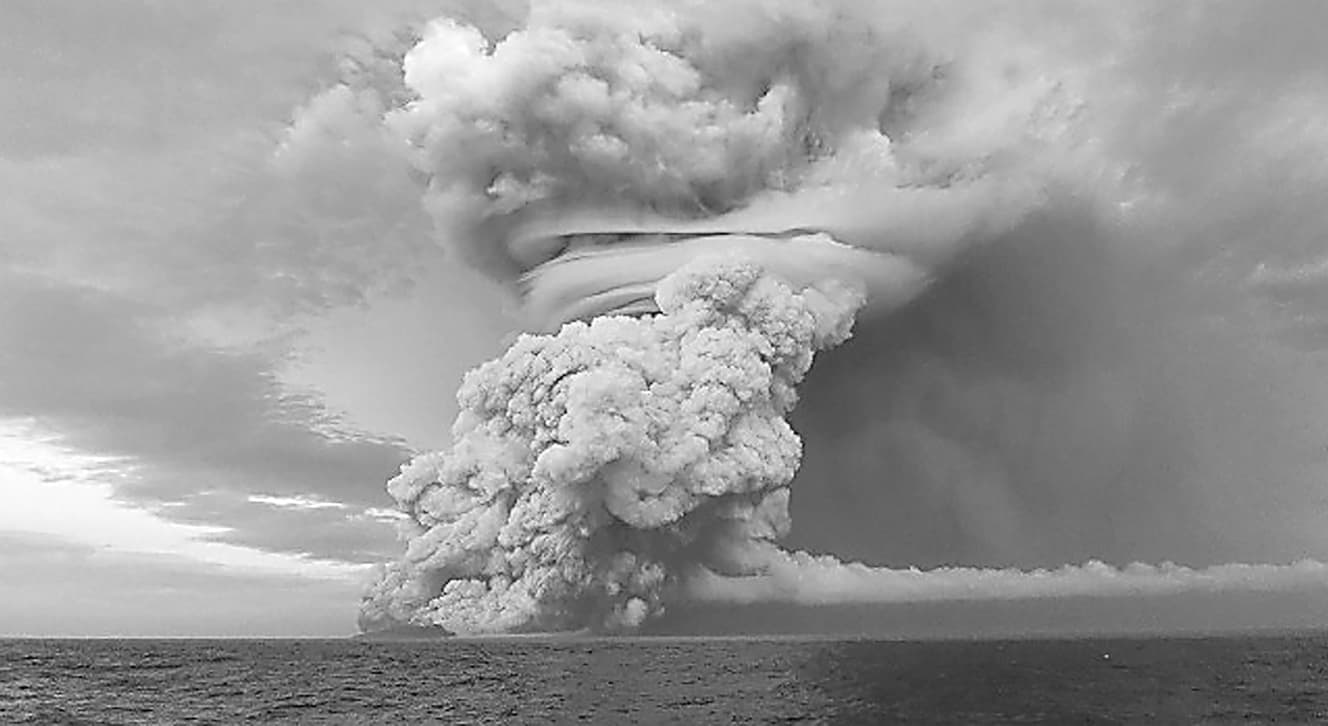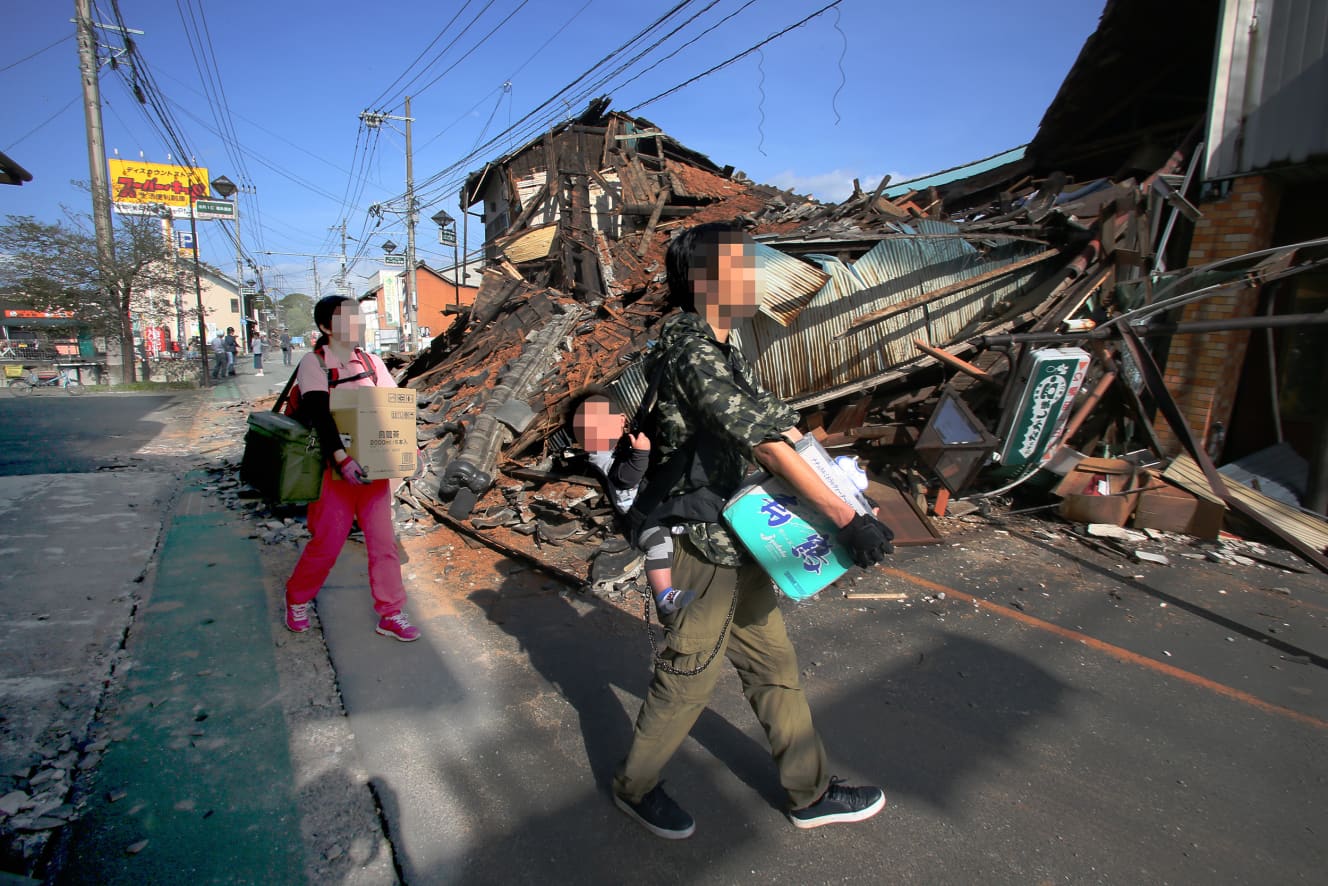The Day Catastrophic Eruption & Nankai Trough Earthquake Swallow Japan
X-Day is definitely approaching. Undersea volcanic eruption off the Ogasawara Islands, massive undersea volcanic explosion in Tonga, and the Hyuga Nada earthquake with a maximum intensity of 5.0 on the Richter scale. ......

Tonga’s eruption is said to be a once-in-a-thousand-year catastrophe, but we should not forget that Japan could experience a catastrophic eruption of even greater power. Tonga and Japan are both located on the western boundary of the Pacific Plate. Moreover, Japan’s undersea volcanoes are larger than its onshore volcanoes. The Pacific Plate boundary from Izu-Ogasawara to Saipan is a dangerous area where catastrophic eruptions can occur,” says Hideki Shimamura, a specially appointed professor of geophysics at Musashino Gakuin University.
A catastrophic eruption is an eruption with a volcanic explosion index of 7 or higher, in which magma from underground erupts to the surface at once, causing catastrophic damage. The volcanic explosion index was 5 to 6. The volcanic eruption triggered a tsunami that hit countries along the Pacific coast. The whole of Tonga was covered with volcanic ash, communication was cut off, and the full extent of the damage is still unknown. Dr. Ryusuke Imura, an associate professor of volcanology at Kagoshima University, said, “The volcano erupted on August 13 last year.
Ryusuke Imura, associate professor of volcanology at Kagoshima University, says, “Fukutoku Okanoba off the Ogasawara Islands, which erupted on August 13 last year, is also an underwater volcano. It was the first time an eruption of that scale had occurred in the waters around the Ogasawara Islands, but before we could investigate it, the waves had eroded everything away, so we don’t really know what happened. In the first place, Japan is a country that was formed when people settled on volcanic islands. It is not surprising that we could be caught in an unexpected eruption at any time.
There are 111 active volcanoes in Japan. Japan has 111 active volcanoes, the fourth largest number in the world, despite being a small island nation. Manabu Takahashi, a specially appointed professor of disaster risk management at Ritsumeikan University, points out the similarities between Tonga and Japan.
Manabu Takahashi, Professor of Disaster Risk Management at Ritsumeikan University, points out the similarities between Tonga and Japan: “Tonga is on the edge of the Indo-Australian Plate, under which the Pacific Plate is subducted. Tonga is at the edge of the Indo-Australian Plate, under which the Pacific Plate is subducting, and Japan is at the edge of the Philippine Sea Plate, also under which the Pacific Plate is subducting. In other words, the active movement of the Pacific Plate is causing volcanic eruptions in the volcanic belts of Japan and Tonga on its boundary.
According to Takahashi, major eruptions are likely to occur at Mount Fuji, Mount Hakone, Mount Aitakayama, Mount Mihara on Izu Oshima, Miyakejima, Hachijojima, Tokachi-dake, and Mashu. The eruptions of Kuchinoerabu Island and Sakurajima (April 25, 2009), Mount Aso (October 20, 2009), and earthquakes in and around the Kii Channel (December 3, 2009) are precursors. (April 25, 2009), and earthquakes around the Kii Channel (December 3, 2009).
What will happen to our lives in the event of a catastrophic eruption in Japan? Mr. Shimamura explains.
The most recent catastrophic eruption was the Onikkai caldera eruption in southern Kagoshima Prefecture about 7,300 years ago. The most recent catastrophic eruption occurred about 7,300 years ago in the southern part of Kagoshima Prefecture. Traces of the tsunami still remain in Mie Prefecture and other areas. This eruption destroyed the Jomon culture in western Japan. If a catastrophic eruption were to occur at a volcano on land in Japan today, the entire archipelago would surely be in danger.
Even more critical than catastrophic eruptions is the impending Nankai Trough earthquake. Takahashi warns.
The eruption in Tonga is thought to be caused by the movement of the Pacific Plate. If this is the case, there is a possibility that a huge earthquake will occur in the future that will cause the Philippine Sea Plate to jump up. As the Pacific Plate is moving from east to west, the adjacent Philippine Sea Plate will be pushed, causing a “ball-busting” phenomenon.
The Hyuganada earthquake that occurred on January 22 is related to the eruption of Tonga, and both are caused by the large movement of the Pacific Plate. And the fact that an earthquake with a maximum seismic intensity of 5.0 on the Hyuganada scale was observed can be said to be a precursor to a major earthquake in the Nankai Trough. The “Super Nankai Earthquake,” which will cause an earthquake directly under the Tokyo metropolitan area and a major earthquake in the Nankai Trough to occur all at once, is approaching.
The countdown to the catastrophe that will engulf Japan has already begun.


From the February 11, 2022 issue of FRIDAY
Photo: Kyodo News: Kyodo News (Tonga eruption), Shinji Hamasaki (2nd photo), Junpei Kota (3rd photo)